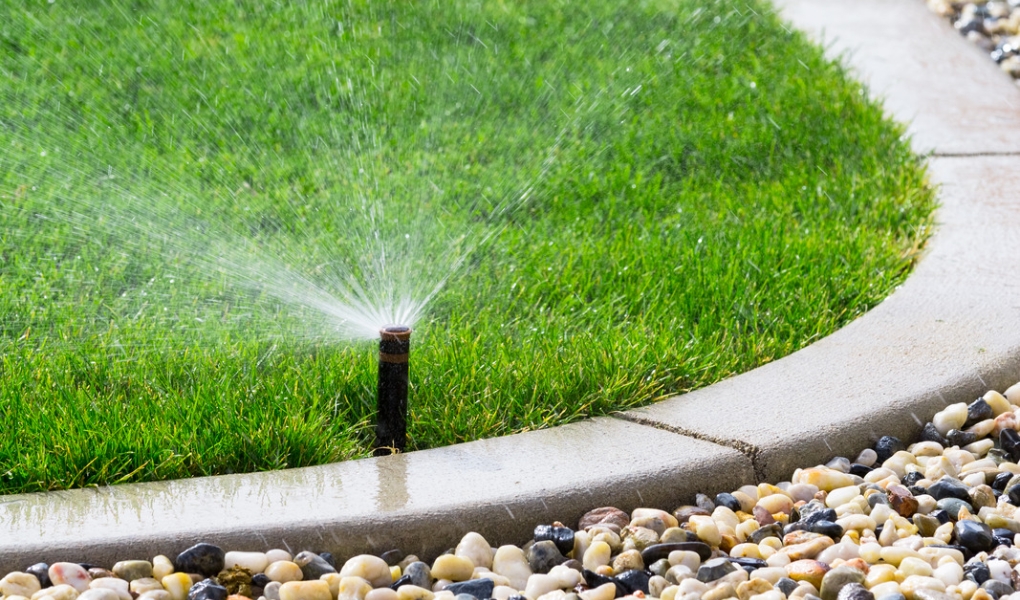Maintaining a beautiful and vibrant lawn requires proper care and attention. If you’re looking for some easy lawn care tips for beginners, you’re in luck!
Whether you’re a beginner or have limited experience with lawn care, this article will provide you with essential tips and techniques to help you achieve a lush and healthy lawn.
From basic maintenance practices to specialized treatments, we’ll cover everything you need to know to create an enviable green space right in your own backyard.
Understanding the Basics of Lawn Care

Choosing the Right Grass
The first step in achieving a beautiful lawn is selecting the right grass variety that suits your climate and soil conditions. Grass species can be classified as either warm-season grasses or cold-season grasses and thrive under certain conditions.
Different grass types have specific requirements and tolerance levels, so it’s important to research and choose accordingly. Factors such as sun exposure, foot traffic, and maintenance effort should also be considered when making your decision.
If you’re unsure, you can check USDA’s Web Soil Survey to know the type of soil you have at home.
Soil Preparation and Testing
Before establishing a new lawn, it’s crucial to prepare the soil properly. Conducting a soil test helps determine its pH level and nutrient content, providing you with a baseline for your lawn care methods. You can easily buy a test kit, like this one from Amazon.
Based on the test results, you can adjust the soil’s pH and improve its composition by adding organic matter, such as compost or peat moss.
Proper Mowing Techniques
Mowing your lawn correctly plays a significant role in its overall health and appearance. Set your mower blade to the appropriate height, ensuring you don’t cut the grass too short, as this can stress the plants and make them susceptible to diseases and weed invasions.
Additionally, remember to sharpen your mower blades regularly to achieve clean and precise cuts.
Essential Lawn Care Tips For Beginners

Watering for Optimal Growth
Proper watering is vital for maintaining a healthy lawn. It’s important to water deeply but infrequently, allowing the water to penetrate the soil and reach the roots.
A general rule of thumb is to provide around 1 inch of water per week, either through natural rainfall or irrigation. Watering in the early morning or late afternoon helps minimize water loss due to evaporation.
Fertilization and Nutrient Supply
Regular fertilization is essential for promoting healthy grass growth and maintaining vibrant green color.
Choose a high-quality lawn fertilizer and follow the manufacturer’s instructions for application rates and schedules. It’s important not to over-fertilize, as this can lead to excessive growth and increased susceptibility to diseases.
Overseeding for Lawn Regeneration
Over time, lawns can develop thin or bare patches due to various factors. Overseeding involves spreading grass seeds over existing turf to thicken the lawn and fill in these gaps.
Before overseeding, ensure that the soil is properly prepared, and choose grass varieties that are compatible with your existing grass type. Water the newly seeded areas regularly to promote germination and establishment.
Dealing with Common Lawn Pests and Weeds
Pests and weeds can be a nuisance to your lawn’s health and appearance. Implementing effective pest control and weed prevention strategies is crucial.
Regularly inspect your lawn for signs of pests, such as grubs or insects, and use appropriate insecticides or natural pest control methods to address the issue.
When it comes to weeds, proactive measures such as regular mowing, proper watering, and maintaining healthy turf density can help prevent weed growth. If weeds do appear, use herbicides selectively and follow the instructions carefully to minimize damage to your grass.
Advanced Lawn Care Techniques

Aeration: Improving Soil Health
Aeration involves perforating the soil with small holes to allow air, water, and nutrients to penetrate deep into the root zone. This process helps alleviate soil compaction, improves drainage, and promotes healthier root development.
Consider aerating your lawn once or twice a year, especially if you notice signs of compacted soil or water runoff issues.
Dethatching: Renewing Your Lawn’s Appearance
Thatch refers to the layer of dead grass stems, roots, and debris that accumulates between the grass blades and the soil surface. Excessive thatch can hinder water and nutrient absorption, leading to an unhealthy lawn.
Dethatching involves removing this layer using a rake, dethatching machine, or specialized attachments for your lawnmower. By dethatching your lawn periodically, you can rejuvenate its appearance and enhance its overall health.
Maintaining a Weed-Free Lawn
Maintaining a weed-free lawn requires a combination of preventive and proactive measures. Regularly inspect your lawn for weeds and manually remove them as soon as you spot them.
Additionally, apply pre-emergent herbicides before weed seeds germinate to prevent their growth. For persistent weed issues, consider targeted herbicide applications, ensuring you follow the instructions carefully to protect your grass.
Professional Lawn Care Services
If you’re overwhelmed or prefer to leave your lawn care to the experts, professional lawn care services can be a valuable investment. These services offer comprehensive maintenance plans tailored to your lawn’s specific needs.
From regular mowing and fertilization to pest control and specialized treatments, professionals can help you achieve a healthy and beautiful lawn without the hassle.
Conclusion
Incorporating these lawn care tips for beginners into your routine will help you achieve a beautiful and well-maintained lawn. Remember to tailor your approach to your specific grass type, climate, and soil conditions.
With proper care and attention, you’ll soon enjoy the lush and vibrant outdoor space you’ve always desired.

3 Comments